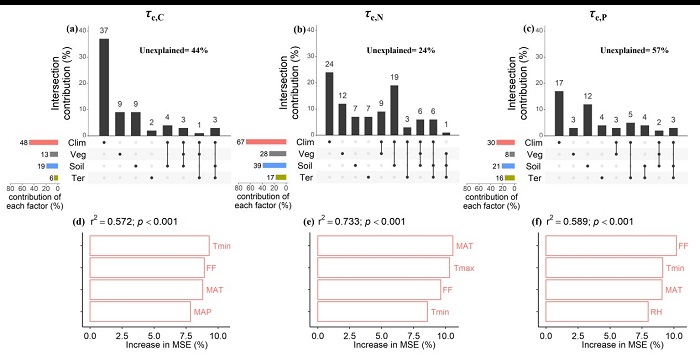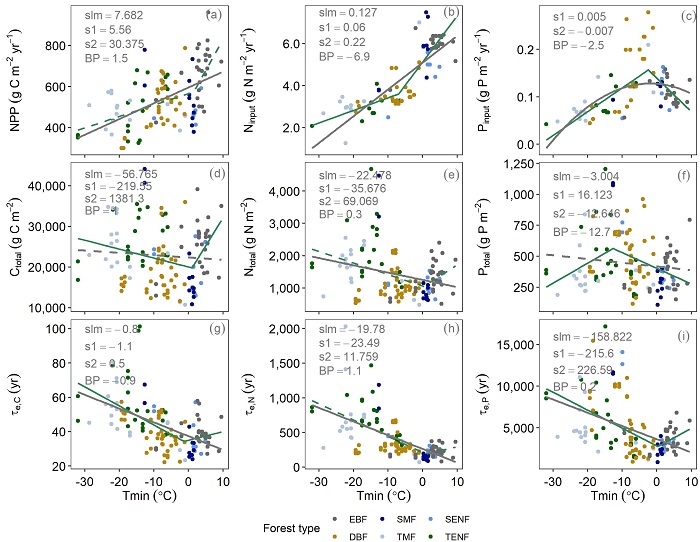

Inputs and outputs of carbon (C), nitrogen (N) and phosphorus (P) are the needs to maintain functioning and development of ecosystem, and are also functions of ecosystem. Therefore, residence times of C and nutrients are important evidences to evaluate stability of ecosystem structure and function. The residence times are influenced by internal component of ecosystem and external environmental factors. However, a few studies focused on calculating ecosystem residence times of C and nutrients in forest and it’s still remain unclear..
Under the guidance of Professor Yan Junhua and Professor Wang Yingping,Chen Yang, a phD student from South China Botanical Garden of Chinese Academy of Sciences evaluated ecosystem residence times of C (τe,C), nitrogen (τe,N) and phosphorus (τe,P) based on survey on 127 forest sites distributed in subtropical and temperate in China and GOLUM-CNP model. They also analyzed relationships between environment factors and the residence times. They found air temperature was the main control of τe,C,τe,Nandτe,P (Figure 1). Residence times decreased with increasing minimum annual temperature in the coldest month (Tmin). Different relationships of τe,C and τe,P and Tmin were observed in temperate and subtropical forests (Figure 2), which may attributed to their different seasonal change. Their results challenge the use of a single temperature-dependent function of ecosystem carbon or nutrient turnover rate in global land models, and highlight the importance of other factors, such as soil weathering stage, clay content, in influencing the responses of carbon and nutrients cycles in subtropical forests to global warming.
The study entitled “Temperature dependence of ecosystem carbon, nitrogen and phosphorus residence times differs between subtropical and temperate forests in China” has been published in Agricultural and Forest Meteorology (IF2022: 6.42). Chen Yang is the first author of the paper, and Junhua Yan is the corresponding author. The research was funded by the National Science Fund for Distinguished Young Scholars (41825020) and the Strategic Priority Research Program of Chinese Academy of Sciences (XDA05050200). Please click on the link below to read more: https://doi.org/10.1016/j.agrformet.2022.109165



